Ten Plagues at the Met
Explore the Ten Plagues through a collection of captivating art spanning thousands of years from the Metropolitan Museum of Art
Published Apr 11, 2023

In celebration of the holiday of Passover, we present an artistic reinterpretation of the famed Ten Plagues through the lens of great objects of art spanning 5,000 years at the Metropolitan Museum of Art. The series will celebrate the artistic history and heritage of many world cultures, countries, and collections of the museum.
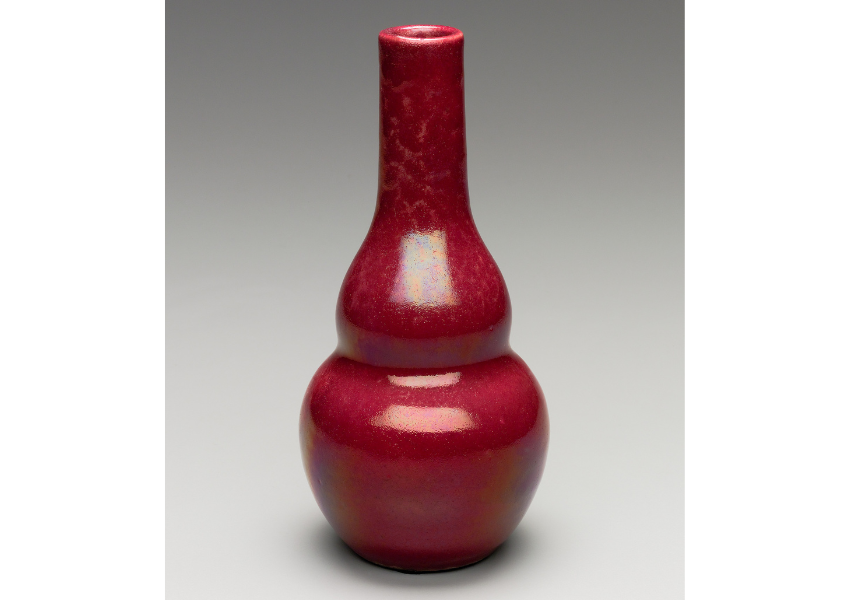
COURTESY THE METROPOLITAN MUSEUM OF ART
Oxblood ceramic vase, Chelsea Keramic Art Works
Blood – Oxblood Ceramic Vase
In April 1885, American ceramicist Hugh C. Robertson replicated the highly coveted yet elusive sang de boeuf ceramic glaze. This deep red color or “oxblood” glaze first appeared in early 18th-century Chinese porcelain. It was developed in the Jingdezhen porcelain kilns during the Kangxi reign to recreate the sacrificial red glaze of early Ming dynasty ritual objects. Proud of his career achievement, Robertson called the variations of his new glaze “Dragon’s Blood,” “Sang de Chelsea,” and “Robertson’s Blood” and created vases in Chinese-inspired shapes.
Robertson was a founder of the Chelsea Keramic Art Works factory (later, Dedham Pottery) and devoted much of his career to explorations in glazes, particularly their color and texture, making him one of the key figures of the Arts and Crafts and American Art Pottery movement at the turn of the twentieth century.
This richly colored blood-red glaze is traditionally created from a copper-based formula and fired in a kiln, depriving the atmosphere of oxygen with various materials which change the glaze to a brilliant red color. Chelsea sang-de-boeuf vessels include many variations of color, from crimson to fiery orange reds, bright raspberry, and deep reds with a purplish cast.
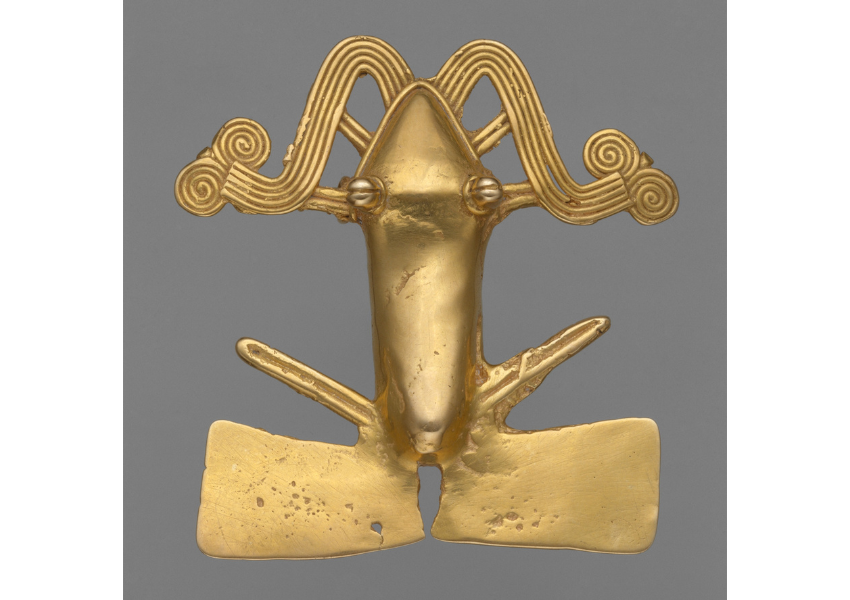
COURTESY METROPOLITAN MUSEUM OF ART
Chiriquí Frog Pendant
Frogs – Chiriquí Frog Pendant
To the indigenous peoples of Costa Rica and Panama, the frog was a sacred symbol associated with rain and fertility. It was frequently depicted character in pendants worn by men around the neck for ceremonial occasions.
The Chiriquians were skilled in the working of metals: gold, silver, copper, and tin. When depicted in goldwork the frog is seen as more powerful. The now-extinct atelopus chiriquiensis species, for example, was found in Costa Rica and western Panama.
The tree frog depicted here has long thin legs projecting from its body. Bifurcated tongues, also seen as a two-headed serpent symbol, emerge from either side of the mouth and are stylized as split scrolls. This example comes from Puerto González Víquez, located in the far south of Costa Rica.
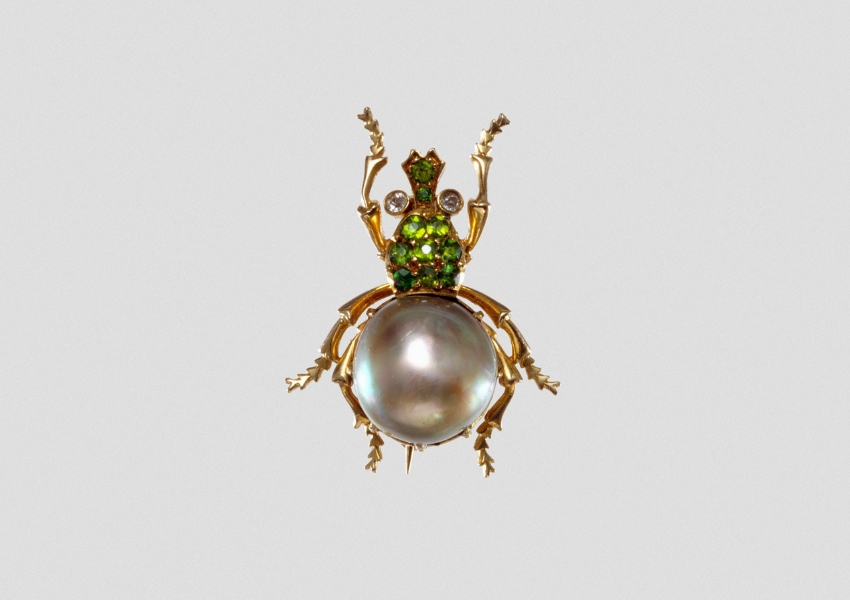
COURTESY METROPOLITAN MUSEUM OF ART
Jaques & Marcus Insect Brooch
Lice – Insect Brooch
Insect jewelry was quite popular during the Victorian Era although it is believed that the Egyptians were the first to wear insects as jewelry. Ancient Egyptian soldiers wore scarab beetles into battle as the beetles were considered to have supernatural powers of protection from harm.
In an effort to romanticize the natural world, the body of this insect-form brooch is set with a large natural grey-green pearl and eight green demantoid garnets; the head is pavé-set with two demantoid garnets and diamond eyes. All of the gems are set in naturalistically chased gold, and six delicate gold legs extend from the body. The hook is marked ‘J&M’ for the New York City jewelry firm Jaques & Marcus, known for its Art Nouveau pieces, active from 1882 to 1892.
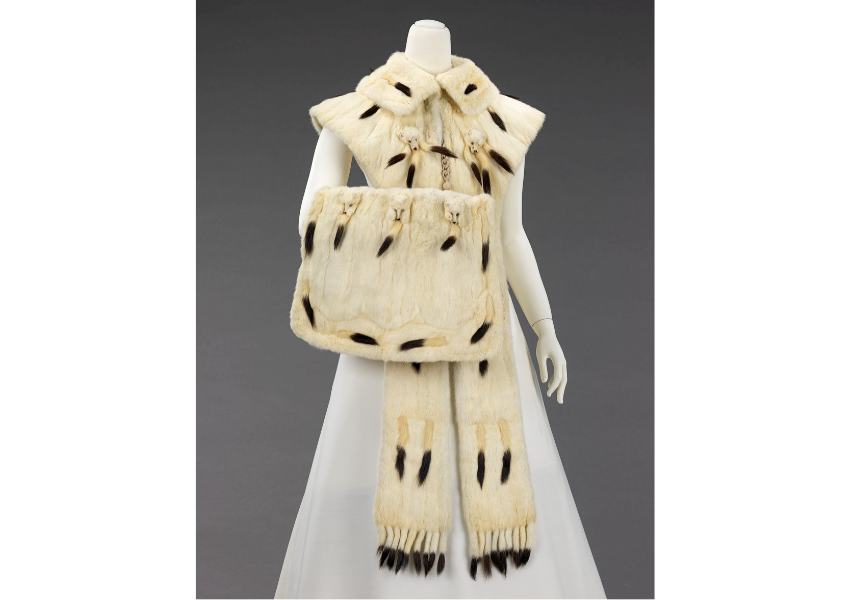
COURTESY THE METROPOLITAN MUSEUM OF ART
Ermine Accessory Set, Ermine Accessory Set
Wild Animals – Ermine Accessory Set
Historically, ermine fur was regarded as a status symbol and favored by royalty from the medieval period onward. It was a well-established detail in aristocratic fashion and even found its place in heraldic coats of arms.
The white winter ermine was the most sought-after fur for court presentations and official portraiture and is still favored. Made of the distinctive white ermine with its trademark black tail-tip pelts, this accessory set represents the luxurious fur accessories used and valued in the Belle Époque period, when ermine fur and even ermine head decorations were de rigueur trimmings for winter attire.
C. G. Gunther’s Sons, the Fifth Avenue manufacturer of this ensemble, was a prominent New York furrier of the 19th century which catered to an elite and fashionable clientele.
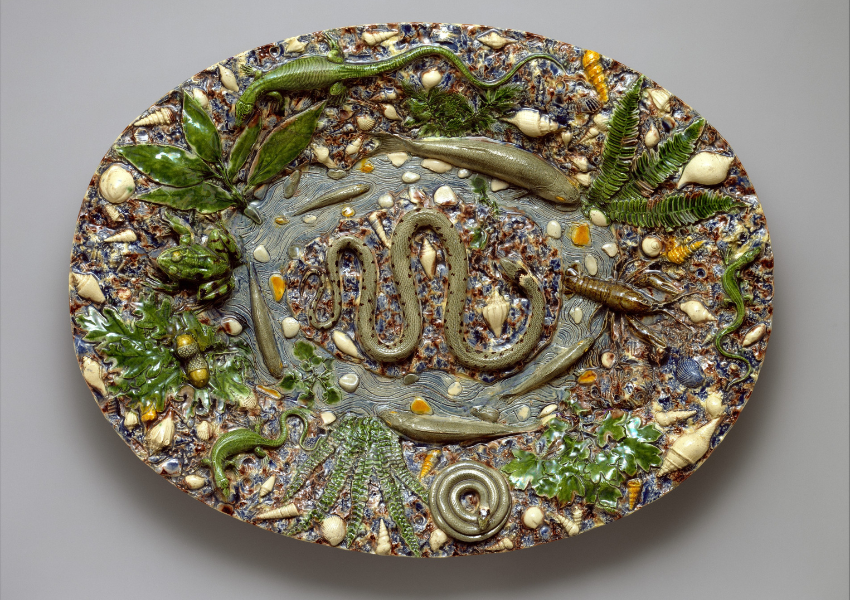
COURTESY OF METROPOLITAN MUSEUM OF ART
Palissy Ware Platter, Follower of Bernard Palissy
Livestock Pestilence – Palissy Ware Platter
Sixteenth-century French Huguenot scientist-potter Bernard Palissy’s distinctive style of polychrome lead-glazed earthenware used naturalistic scenes, plants, and animals cast from life during an era of great interest in natural phenomena and a taste for exotic. His rustic pottery or “Palissy ware” was characteristically oval platters featuring small animals, insects, reptiles, and sea life in relief among vegetation fashioned in a range of colored glazes to develop what he called pastoral pottery.
Palissy’s best pieces were pressed into a mold, and he made casts of actual specimens for his modeling. Perhaps his greatest fan was Catherine de’ Medici, for whom he built a pottery grotto in the gardens of the Tuileries.
This dish, in the manner of Palissy in the classic oval shape – is a pond surrounded by plant life including fish, frogs, a twisting snake, a lizard, a water beetle, crayfish, and a variety of occupied shells.
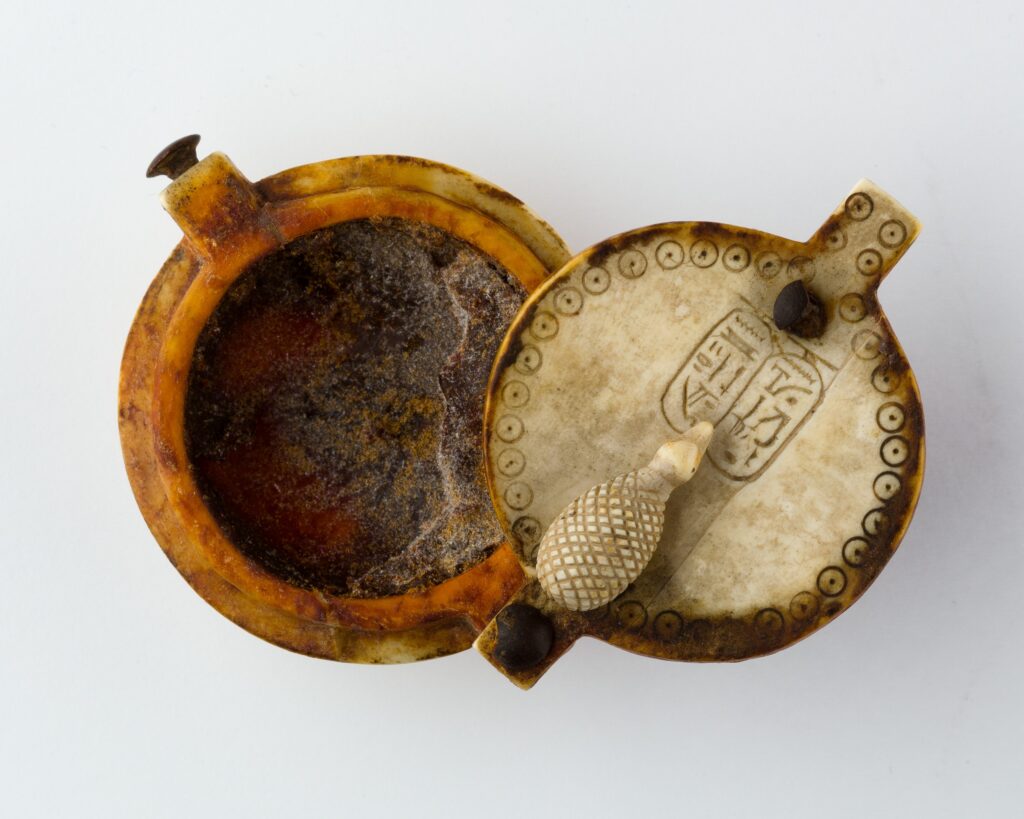
COURTESY METROPOLITAN MUSEUM OF ART
Ivory Unguent Box of Queen Nefertari
Boils – Ivory Unguent Box
Likely to have held a viscous substance or ointment for the skin, this delightful box bears a swivel lid that opens to reveal the space inside for such cosmetics. The lid features the cartouches of Ramesses II and his first principal wife, the esteemed Nefertari. She is often shown beside her husband in many tomb and temple scenes and in statuary and even given her own temple in Nubia.
Following an early death, Nefertari was buried in the Valley of the Queens, where her tomb remains one of the most spectacular testaments to the artistry of the ancient Egyptians. Coincidentally, she is thought to be the Egyptian queen during the time of the Biblical Ten Plagues and later, the Exodus.
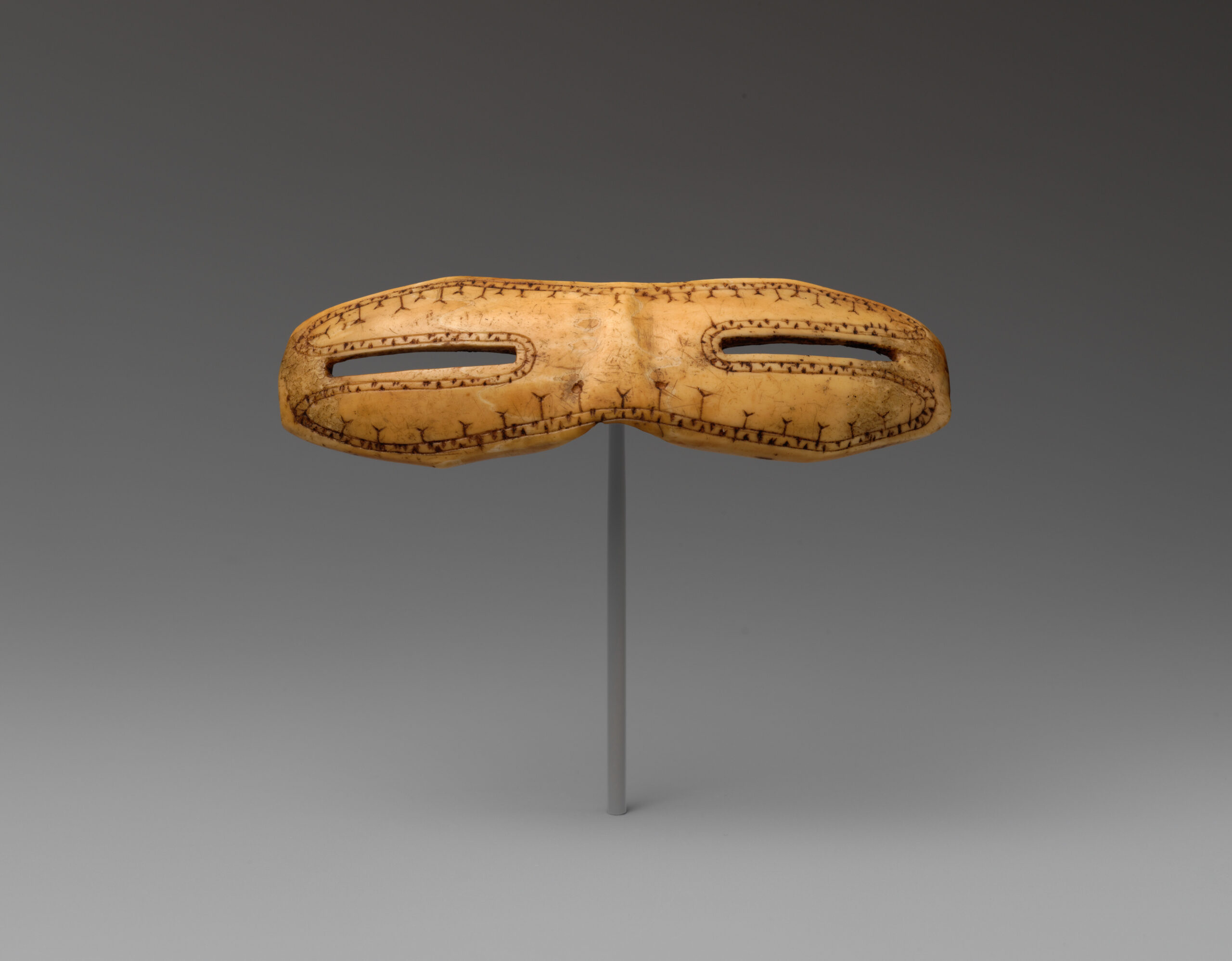
COURTESY METROPOLITAN MUSEUM OF ART
Thule Snow Goggles
Hail – Thule Snow Goggles
These innovative carved goggles were used to shield the eyes of the people of the Thule culture – ancestors of the Inuit – from windblown ice and the glare of the sun upon the snow.
Thule art and objects were often carved in walrus ivory. The engraved designs, markings, and patterns surrounding the narrow eye openings create a unique appearance and are purely decorative. The Arctic North people have made and worn such highly effective eyewear for centuries.

COURTESY THE METROPOLITAN MUSEUM OF ART
Japanese Freshwater Jar, Makuzu Kōzan I (Miyagawa Toranosuke)
Locusts – Japanese Freshwater Jar
The Japanese tea ceremony is a cultural activity infused with tradition. How appropriate to feature the grasshopper, a symbol of good luck in Japan. Insects and grasshoppers, beloved for their chirping song, were sometimes caught or purchased and kept in cages to enjoy. The insect’s noises are seen as soothing, and many favored species are featured in Japanese mythology such as the dragonfly.
This delicately executed Mizusashi – or freshwater jar for the tea ceremony – features a parade of brightly colored wasps and anthropomorphic grasshoppers bearing tall flowers, a carrying pole for a large berry and accompanying an insect cage, evoking the elaborate processions of a daimyo, or feudal lord. The insect-cage or pet-insect motif can be seen in many art forms during the Edo period and is depicted in an early woodblock-printed book of patterns.
This charming jar was crafted by Japanese ceramicist Kōzan, who descended from a long line of Kyoto potters and is popular with Western collectors.
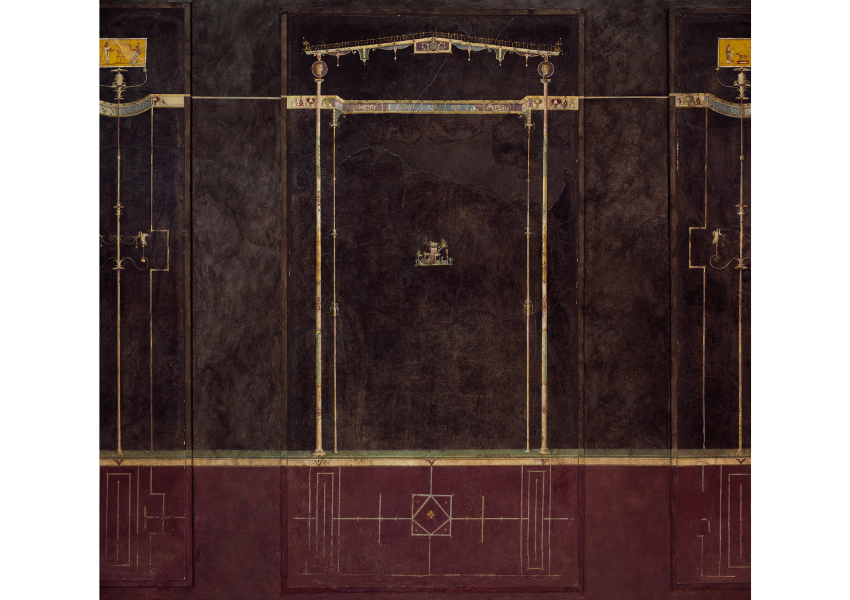
COURTESY METROPOLITAN MUSEUM OF ART
Pompeian Wall Painting “Black Room”
Darkness – Pompeian Wall Painting
This “Black Room” is the series of frescoes that come from cubiculum 15, or bedroom walls from an imperial villa at Boscotrecase, along the southern side of Mount Vesuvius which belonged to Agrippa, a friend of the Emperor Augustus. The villa was buried in 79 C.E. by the eruption of the neighboring volcano and its frescoes was preserved by Vesuvius’s ash.
Ten original fresco panels executed in the Pompeian Third Style of wall painting include elements of Egyptian imagery: Egyptian deities and symbols; mythological or allegorical scenes: two swans referencing Apollo, Augustus’s Patron god; and intricate ornamentation: slender metallic columns support a pavilion structure or aedicula, candelabra and a narrow cornice. The combination of small images floating within the pictorial plane occupying little space and the deep black darkness suggest no sense of depth.

COURTESY OF THE METROPOLITAN MUSEUM OF ART
Sicán Funerary Mask
This mask, made of hammered sheet gold alloy affixed with danglers and covered in its original pigment – the red mineral cinnabar – once adorned the body of a deceased ruler in the Lambayeque region along Peru’s northern coast. The large, upturned eyes are characteristically Lambayeque in style and suggest the image of the Sicán Deity, as well as seen in other pre-Hispanic societies. A mask of this style and decoration would likely have been used exclusively to cover the face of a person of noble status.
Powerful dynasties arose in this region between the 8th-14th centuries and amassed great riches in gold and silver before they were conquered by the mighty Inca Empire in the late fifteenth century. The lords of these dynasties were patrons of vast workshops where finely crafted ornaments and ceremonial vessels were created. The great number of metalworking sites in the Lambayeque region suggests the demand for the production of precious metal objects by the elite.
The funerary customs of the Middle Sicán culture are distinct. At death, the lords were buried deep in monumental mud-brick platform mounds along with large numbers of objects of precious metal, shell, and cloth. In addition to beakers, disks, and other ornaments, the burials included large masks with religious iconography such as our example, made of sheet gold. As many as five masks were placed into one burial: one attached to the head of the textile-wrapped body, and the other four stacked at the feet of the deceased. The amount and quality of such funerary objects are indicative of the elite status of the deceased and the sanctity of the ritual space of the tomb.
Abigail H. Meyer is a researcher for Judaica at the Metropolitan Museum of Art.
Reflections
What art objects in your favorite museum, or at home, remind you of the Ten Plagues?
What contemporary design elements have you seen that playfully celebrate the Passover story, the Seder, or the Ten Plagues?
Want more?
Get curated JewishArts.org content in your inbox


